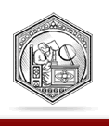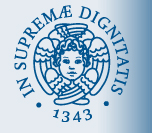Our lab and experiments
Optical lattice - Setup
Bose-Einstein condensate in optical lattices: experimental setup
The experimental setup described in detail in [1,2]. Briefly, we create condensates of N ~ 10
4 rubidium
atoms in a time-orbiting potential trap. Once condensation has been achieved, the mean trapping frequency trap of the
magnetic trap is adiabatically reduced to values between 15 and 50 Hz. Thereafter, two laser beams with waists of
1.8 mm and intersecting at an angle 180 (38) degrees at the position of the condensate are switched on with a linear
ramp of duration 10 ms, thus ensuring adiabaticity of the loading process. The beams are detuned to the red side
of the rubidium atomic resonance by ~ 30 GHz and have a variable frequency difference between them, controllable
through two acousto-optic modulators which are also used to vary the intensity of the beams. In this way, a periodic
potential with lattice constant d = 0.39 (1.18) µm and lattice recoil energy E
rec / h = 3770 (455) Hz is created,
which through the frequency difference Δν can be made to move at a constant velocity v = d Δν or
accelerated with a
L = d dΔν/dt .
-
O. Morsch et al.
Phys. Rev. Lett. 87, 140402 (2001).
-
M. Cristiani et al.
Phys. Rev. A 65, 063612 (2002).





